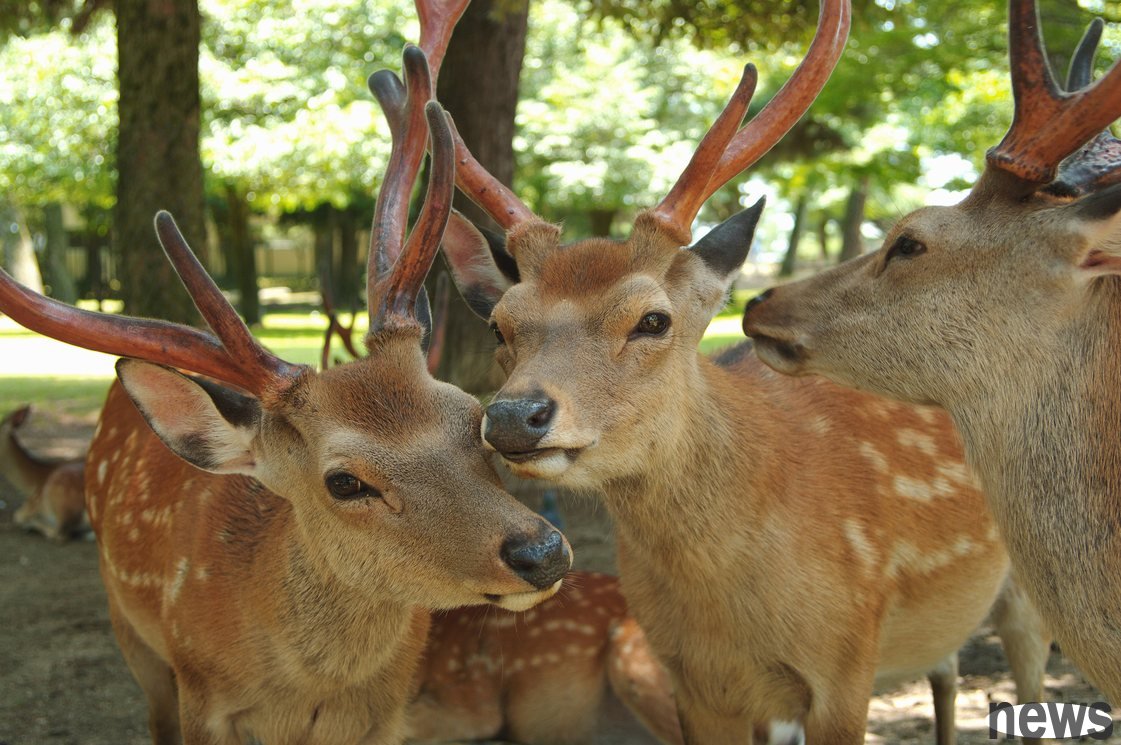I published a deer fetal plate crap on 2023-6-2: Deer is not jealous, so it can cure all diseases and cancer. I denounced a fake science and real online article. This article has fabricated many disgusting scientific comments to promote a "can...

I published a deer fetal plate crap on 2023-6-2: Deer is not jealous, so it can cure all diseases and cancer. I denounced a fake science and real online article. This article has fabricated many disgusting scientific comments to promote a "can cure all diseases", including: (1) The deer's genes are most similar to humans, (2) The deer is the only animal without suckling, (3) The deer is used to detoxify, (4) The deer will avoid toxic plants, and (5) If you avoid toxic plants, you will not suffer from foot-and-mouth disease or crazy bovine disease.
After seeing these absurd comments, several readers also came to fight against counterfeiting.
Reader Deerhsu responded: I have a friend who spent 80,000 silver pieces to buy deer fetal plate products, and as expected, the whole body was full of red and dysfunction. The common saying of all direct dealers is the same: buy another set to increase your strength, and detoxify ……! It turns out that my friend is very poisonous and I want to stay away from her.
Facial friend Mr. Wu sent a news release on April 2023 on Free Time. It is prohibited to import Chinese medicines from deer antlers from the United States and Canada. Chronic wasting disease, commonly known as mad deer disease, is a brain-skin disease similar to mad bovine disease that can attack the deer's brain and neural systems.
Reader Guava responded: Some of the tricks to sell deer fetal plates are actually too funny. "And deer is the only animal that has no organs in all breastfeeding animals," is it? It's far from it. Macroe animals (such as horses, spotted horses, vegetation), most deer animals, vegetation, long-haired deer, rhino, elephant, whale, rat, etc., do not have cysts. Juice is made by the liver. Although these animals do not have cysts, they still have cyst juice, but they do not have a special storage organ. Their juice usually continues to flow into the kidneys. Are deer especially cautious when eating plants and not poisonous ones? not necessarily. (Note: For information about which animals have cysts and which ones do not, please see if they have cysts and are not cysts.)
Reader Guava has an article attached to the title Deer Can Eat Poisonous Plants (deer can eat toxic plants). I sorted out the key points as follows:
Deer can eat poisonous plants (such as sophora, poisonous ivy, American quota and iron fir) without adverse effects. Deer will immediately eat clay, salt or natural minerals after they are trapped in poisonous plants. These compounds help neutralize some toxins and activate special bacteria in the first stomach that helps digest toxic substances. Deer will also carefully mix their food to prevent their bodies from overloading the toxins. A study of black-tailed deer found that if mixed with other plants, they can eat twice as much of the poisonous plants. They may even instinctively ingest plants containing natural detoxifiers.
I searched online myself and found a How Deer Eat Poisonous Plants published by the Alaska Department of Vehicles. I sorted out the key points as follows:
Wild animal biologist Tom Hanley studied deer nutrition and said he was amazed at the deer's diet. He said that most natural plants contain various toxins. The way deer solves this problem may be to eat a variety of plants and safely suck a small amount of poisonous plants.
Elvia Lopez-Perez, a graduate student at Eldar-Hordeaux University and Washington State University, reported on another dietary strategy. Researchers found that animals eat clay or lick the soil's minerals, which tend to squeeze or combine toxins and counteract harmful effects of plant compounds.
Different animal species have different tolerance to phytotoxins. Black-tailed deer tolerate crawlings more than pronghorns, while elk tolerate yellow pine more than bison. In some cases, this is because of the chemistry of the tract, says Charles Robins, a professor of animal and natural resources science at Washington State University.
Eating a small amount of phytotoxin can inspire the microorganisms to adapt to the kidney, which can provide opportunities for animal systems to adapt toxins. This explains why different individuals in a species may be better tolerated by certain foods.
Robins also said: "The rumen definitely helps because the bacteria inside it can detoxify. For example, some plants contain cyanosides, which release cyanide. The bacteria in the rumen can absorb nitrogen from cyanide and convert it into amino acids. Then, deer benefit from the amino acids and digest the bacteria itself as another source of nutrients as the bacteria flows into the other two digestive stomachs."
In other cases, this is related to the anatomic structure of the animal. Many animals can eat plants containing neurotoxins because their neuroreceptors are slightly different. For example, many squirrels eat mushrooms that are poisonous to us.
So now you know why readers Guava will say "the trick of selling deer fetal plates to cheat people".
If you don't think it's done, please continue to read what I published:
NTU proves that deer fetal tracheal cells are helpful to the human body?
Counterfeit tracheal cells in deer fetal tracheal cells – Singapore Government: False and misguided
Original text: Deer don't eat poisonous plants? Deer-Feeding Trap Tackles Dig into TipsResponsibility Edit: Gu Zihuan